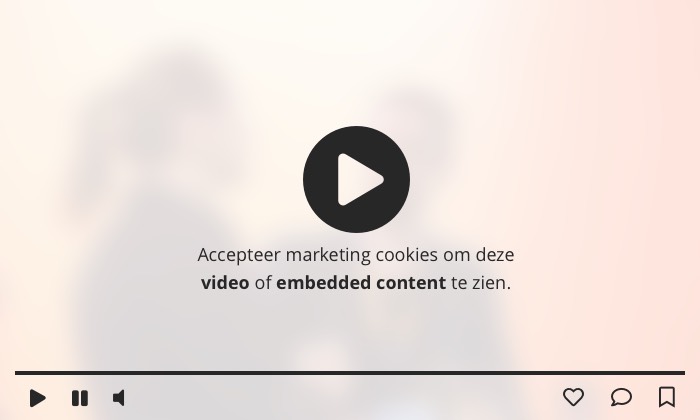Who or what do you write content for? I hope you write content for your target audience. But when I look at the many blogs on websites, I usually see that content is written for search engines, around search trends. But does that content answer the real, pressing questions of your target audience?
In the book They Ask, You Answer (affiliate), Marcus Sheridan argues that you gain the trust of your potential customers by answering all their questions and resolving their concerns with the online content you create. In his book (translated by Danielle Navas-Brandt), Sheridan offers a new perspective on business, marketing, and trust. In this article, I will explain the key principles of They Ask, You Answer.
Research takes place online
Nowadays, more than three quarters of the purchase decision is made based on information found online. I recognize myself in that. If I want to buy something, I first do extensive online research. In fact, I already make my choice online. And once I have reached that point, I order the product or service online or walk purposefully into the store. There is hardly any sales assistant involved.
Sheridan argues that it is therefore better to provide all the information to the potential buyer in advance in the form of different types of content (think video, text, images) to ensure that he/she makes the best purchase decision. Because, according to Marcus Sheridan, one thing is certain in our digital and visual world: what you don’t show, doesn’t exist.
In our digital and visual world, one thing is certain: what you don’t show, doesn’t exist.
The Big 5
To best inform your potential customers, you need to find out what their questions are. After creating a lot of content on his own website (he sold swimming pools), Sheridan analyzed which topics (questions) seemed to touch the readers. It came down to 5 topics:
- Prices and costs
- Issues
- Comparisons
- Reviews
- The best in its class
These are the very topics that every consumer and business researches the most before making a purchase decision. Sheridan’s advice is to start creating content on these 5 main topics. The advice, according to the Big 5:
- Dare to show your price on the website and explain what factors determine the price (especially if you offer a service).
- Take away people’s worries. Everyone worries about what could go wrong if they finally decide to spend money. Talk about the problems of your product, the disadvantages. Answer the following questions: what are the problems of your product/service? What is negative about what you sell according to the competition? Answer these questions honestly and transparently.
- Play on comparisons, consumers love them these days. Dare to honestly compare your product with that of others.
- Consumers also attach great value to the experiences of others. Therefore, make sure you ask for reviews. Dare to share them. The good, the not so good and the bad. Also use external review platforms to show reviews outside of your website content.
- Sometimes there is no good comparison material or there are few reviews. Then create your own content. Research the solutions of competitors and make a top 10 list of all solutions. Of course, this must be sincere and not just a piece about how your solution is the best in the world.
Sheridan advises to create the above content with your ideal customer as your starting point. Don’t be swayed by what competitors are saying online or what unsuitable customers want to hear. Your ideal customer is the starting point for all the content you create.
Impact on sales
By creating so much informative content, you also help the sales team. Not only does it force the marketing team to understand the target audience better, but it also helps the sales team understand what the customer’s questions are and how to best answer them. But the content can also do a lot of groundwork for the salesperson.
By having informative content online, you build the potential buyer’s trust. When the potential buyer is finally ready to buy, the salesperson can focus on what he or she is good at: selling. The sales cycle is also shortened. The salesperson has to spend less time selling because a lot of important information has already been provided online.
Assignment selling
The content can also be actively used in the sales process. Sheridan calls assignment selling as a key component. He defines assignment selling as ‘the process of intentionally using educational content to teach others about your products and/or services, with the goal of resolving prospects’ key concerns and questions, so they are much better prepared for a sales meeting.’
It goes like this:
- A prospect reads the information on your website and decides he or she is interested. The prospect calls your company.
- The salesperson asks a few qualifying questions to see if the prospect is a good fit. If so, an appointment is scheduled.
- Before hanging up, the salesperson asks the prospect to do something before the sales appointment takes place: a bit of homework.
- The salesperson sends a piece of content (separate document, whitepaper, brochure, video) with specific information to the prospect.
- If the prospect immediately responds that he will not read the content, then you know immediately that this was not a qualified lead. But if the prospect is enthusiastic about it and does not find it a problem, then you know immediately that this is a potential buyer.
With assignment selling you ensure that you have an informed lead and you ultimately have a more enjoyable and (hopefully) smoother sales process.
The importance of video content
Content can take many different forms. According to Sheridan, video is a fundamental part of the purchasing process. This also corresponds to today’s customer journey – we increasingly look at images (static and moving). Videos are a perfect way to clearly explain what your company stands for, what you sell and how the processes within your company work, for example. Sheridan claims that a video culture within a company is essential. According to him, every marketing team needs a videographer. And preferably one who is employed by the company.
There are many types of videos that can be created. Sheridan mentions 7 types of videos that are important to create:
- The 80 Percent Video: Answer 80% of the common and standard questions a salesperson normally answers during the sales call.
- Biographical videos: Designed to humanize your company. Create a video for each of your team members and provide a little personal information about the person.
- Suitable-for-me videos: explain who the product or service is for not is appropriate.
- Landing page videos: Place a video right next to the form customers need to fill out online to better explain the process and what happens after filling out the form.
- Pricing and Cost Videos: Address all the factors that affect the cost of a product or service. Talk about your product or service and why it costs what it costs.
- Customer journey videos: show the journey a potential buyer goes through. The goal is for a viewer to see this video and think: they are just like me. They had the exact same problem and this is how they solved it.
- Claim videos: companies often find it interesting to claim that they are the best. Show this by telling stories that prove this principle.
Videos can help you say much more. Most companies think they have to have a fancy, ‘dressed up’ video made at all times. On the contrary, show what your company stands for and make it real.
Ready to answer all the questions?
After reading the book They Ask, You Answer I am inspired as a marketer. I see a lot of companies around me that indeed do not answer the questions of their target group well. While that is actually the most important thing that marketing can do. Unfortunately, we see that nowadays a lot of content is written to hack systems. Think of all the content that is written purely to become visible in search engines. Or think of the mass of content that is now written by AI.
Does this type of content really answer the questions of the target audience? I believe that many companies (B2B and B2C) can improve their content strategy. Let’s start by creating content on the Big 5 topics.
Source: www.frankwatching.com



